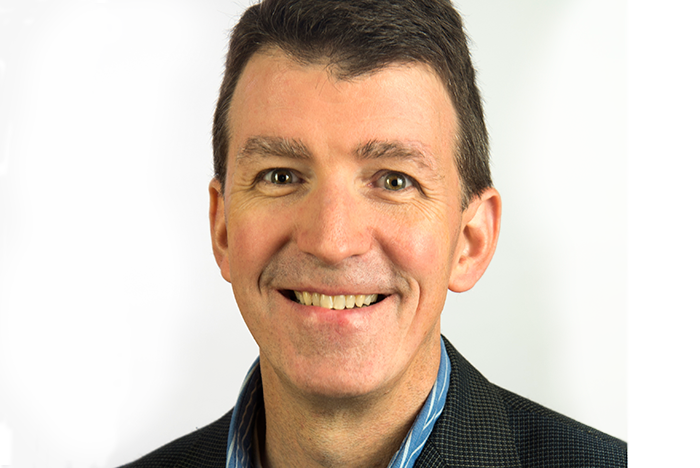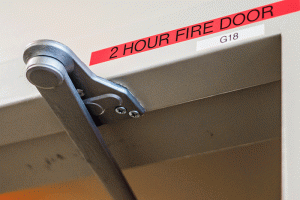NFPA official discusses updates to facility codes

The Harrington File
CV
- Principal engineer, National Fire Protection Association (NFPA), Quincy, Mass.
- Fire protection engineer, San Antonio Fire Department, San Antonio.
- Fire protection engineer intern, Schirmer Engineering Corp., Falls Church, Va.
- Call/volunteer firefighter/emergency medical technician, Lunenburg, Mass.; Fairfax County, Va.; and Shavano Park, Texas.
Accomplishments
- Staff liaison, NFPA 101®, Life Safety Code®, Correlating Committee on Safety to Life.
- Staff liaison, NFPA 101 technical committees on fundamentals, means of egress, assembly occupancies and health care occupancies.
- Co-editor, Life Safety Code Handbook.
- Staff liaison, NFPA 99, Health Care Facilities Code, Correlating Committee on Health Care Facilities.
- Staff liaison, NFPA 99 technical committees on fundamentals, piping systems, medical equipment, and hyperbaric and hypobaric facilities.
- Co-editor, Health Care Facilities Code Handbook.
- Chair, NFPA Healthcare Interpretations Task Force.
- Professional member, Society of Fire Protection Engineers.
- Licensed professional engineer in Connecticut.
Education
- Master of Science in fire protection engineering and Bachelor of Science in mechanical engineering at Worcester Polytechnic Institute, Worcester, Mass.
As the National Fire Protection Association’s (NFPA’s) principal engineer and staff liaison for NFPA 101®, Life Safety Code®, and NFPA 99, Health Care Facilities Code, Gregory Harrington, PE, plays a key role in health care facilities compliance. In this interview, he talks to Health Facilities Management about those codes.
How long have you been at NFPA, and when did you become involved in health care facilities codes?
I completed my 28th year at NFPA this past April. I was hired in 1996 after working several years as a fire protection engineer with the San Antonio Fire Department, where I reviewed several large hospital projects. I was assigned as staff liaison to the NFPA 101 Technical Committee on Health Care Occupancies in 2016. I was subsequently assigned oversight responsibility for NFPA 99 in 2020, shortly after we went into lockdown for COVID-19. The 2024 edition of NFPA 99 was my first as staff liaison to that code.
What areas outside of health care did you cover at NFPA previously?
The bulk of my NFPA career has been focused on staffing, answering technical questions and teaching seminars on NFPA 101. This exposed me to the health care field from the life safety perspective and taught me how to manage a large correlating committee project. NFPA 99 and NFPA 101 are developed by multiple technical committees that are responsible for pieces of the standard and report to a correlating committee, which has responsibility for the overall standard.
To my knowledge, I am the first NFPA staff member to manage two correlating committee projects (NFPA 99 and NFPA 101) simultaneously. Having a strong background in the standards development process has allowed me to dive into the technical areas covered by NFPA 99. I am still on the learning curve, but the volunteers who serve on the committees have been extremely helpful.
What is the role of the NFPA Healthcare Interpretations Task Force (HITF), and who are its members?
The HITF was formed in 1998 and brings together (at least annually) key organizations to evaluate, debate and engage their resources to establish consistent interpretations of specific issues and questions on NFPA codes and standards.
While membership is open to any organization having an interest in the application of NFPA standards to the health care field, voting on the interpretation of specific questions is limited to the 10 authority having jurisdiction (AHJ) members, which include the Center for Improvement in Healthcare Quality, the Centers for Medicare & Medicaid Services (CMS), the Department of Defense, the Department of Veterans Affairs, DNV Healthcare, the Accreditation Commission for Health Care, the International Fire Marshals Association, the Indian Health Service, The Joint Commission and a state health care agency representative. Non-AHJ member organizations include the American Society for Health Care Engineering, the American Health Care Association, the chair of the Life Safety Code Technical Committee on Health Care Occupancies, the chair of the Correlating Committee on Health Care Facilities, the chair of the NFPA Health Care Member Section and NFPA, which is the HITF support organization. As the support organization representative, I chair the HITF.
What is the standards revision process for NFPA 99 and 101?
Both NFPA 99 and NFPA 101 are updated every three years. The revision cycle consists of a public input (PI) stage that yields a first draft, and a public comment (PC) stage that yields a second draft. Anyone can submit a PI or PC, which is a proposed revision to code language, online. NFPA membership is not required.
The technical committees meet to review and respond to all submitted PIs and PCs and develop the first and second drafts. In some cases, the second draft can be further modified by amendments at the NFPA Annual Technical Meeting held in conjunction with the NFPA Conference & Expo. The process is fully transparent; all NFPA technical and correlating committee meetings are open, although participation is generally limited to the members of the committees, which are balanced by interest categories. Details on meeting dates and locations are posted at nfpa.org/codes.
What are the next steps for the 2027 NFPA 99 and 101 standards revisions?
The NFPA 99 and NFPA 101 technical committees are meeting in July and August to prepare their first drafts. The correlating committees will meet in January 2025 to finalize them, and they will then be posted online in March 2025 for PCs. It is important to note that PIs can address anything in the code. PCs, however, must be related to topics that were addressed during the PI (first draft) stage. A PC is not permitted to introduce so-called “new material” that would not have the opportunity for public review. For example, a PC can address a first revision or a PI that was not incorporated as a revision by the committee. A PC cannot address code language that received no discussion during the PI (first draft) stage.
Why do you think it’s advantageous for CMS to adopt more recent versions of NFPA 99 and 101 than the 2012 editions that they currently enforce?
The NFPA Fire & Life Safety Ecosystem, described in detail at nfpa.org/ecosystem, is a framework that identifies the components that must work together to minimize risk and help prevent loss, injuries and death from fire, electrical and other hazards. One component is the development and use of current codes.
The codes are periodically updated to reflect the state-of-the-art and recognize changes to how facilities function. I think many would agree that health care facilities simply do not function today in the same way as they did in 2012. In some ways they likely function much differently than before COVID-19 just four or five years ago. The current editions of the codes allow facilities to be arranged and function in ways that incorporate lessons learned from the pandemic.
Making a facility function today using the codes from 2012 is like trying to put a square peg into a round hole. It can require modifications to the requirements, which take time and money. By updating to the current editions, facilities can redirect those resources to providing high-quality patient care.
How can facilities professionals get involved in the NFPA process?
Anyone who is interested can visit the NFPA website at nfpa.org and explore the codes and standards pages. Individuals can learn when standards are open for PIs and PCs and then submit proposed revisions. They can also find meeting dates and locations and attend as guests. Many meetings offer a virtual option.
Those who want to take it to the next level can apply for membership on a technical committee; applications can be submitted online. If an applicant has the requisite expertise and there is room for additional members in their interest category, they will likely be appointed.
Michael Hrickiewicz is editor-in-chief of Health Facilities Management magazine.



